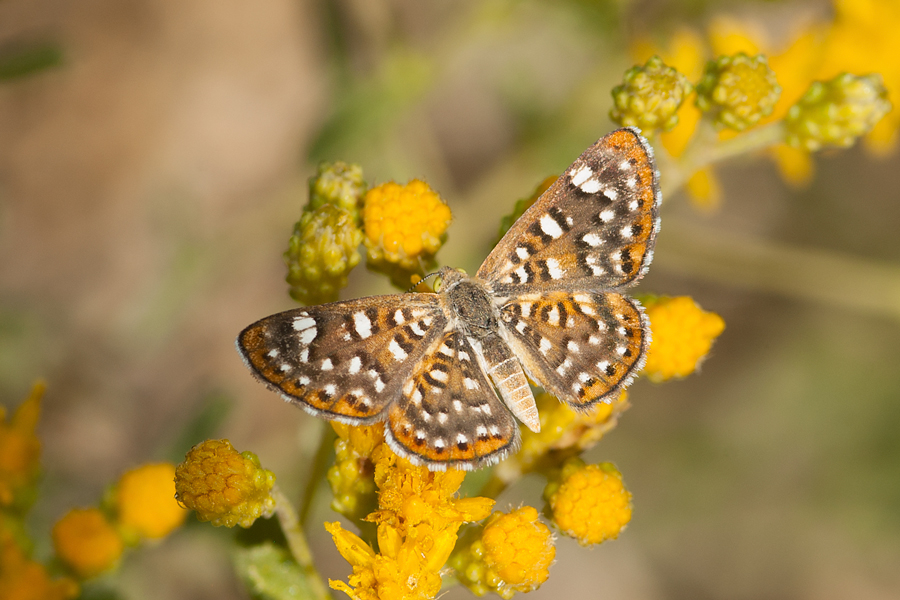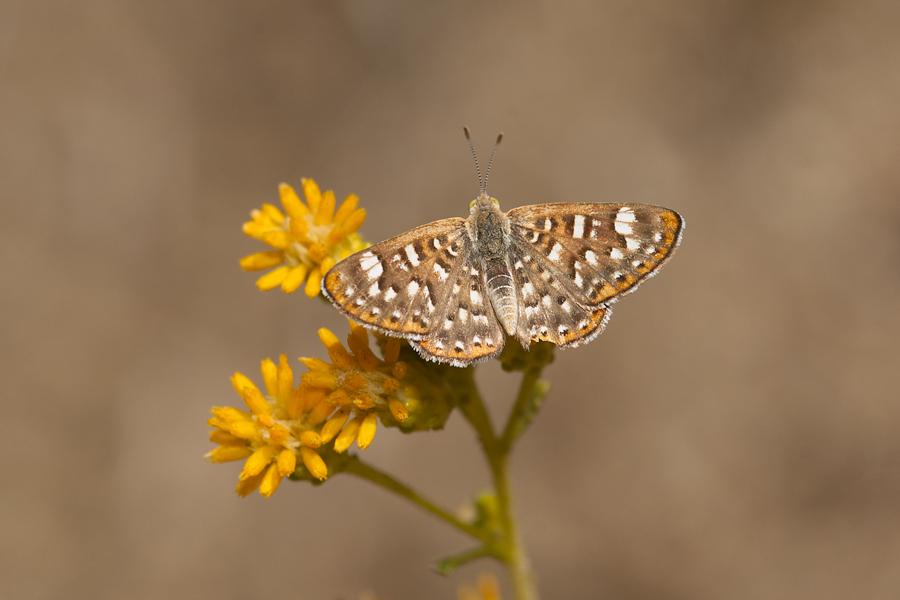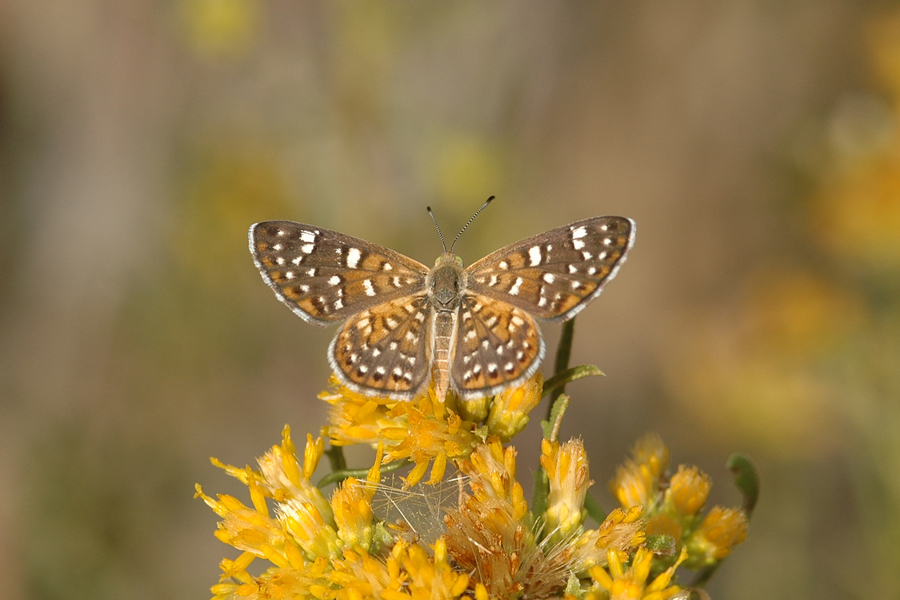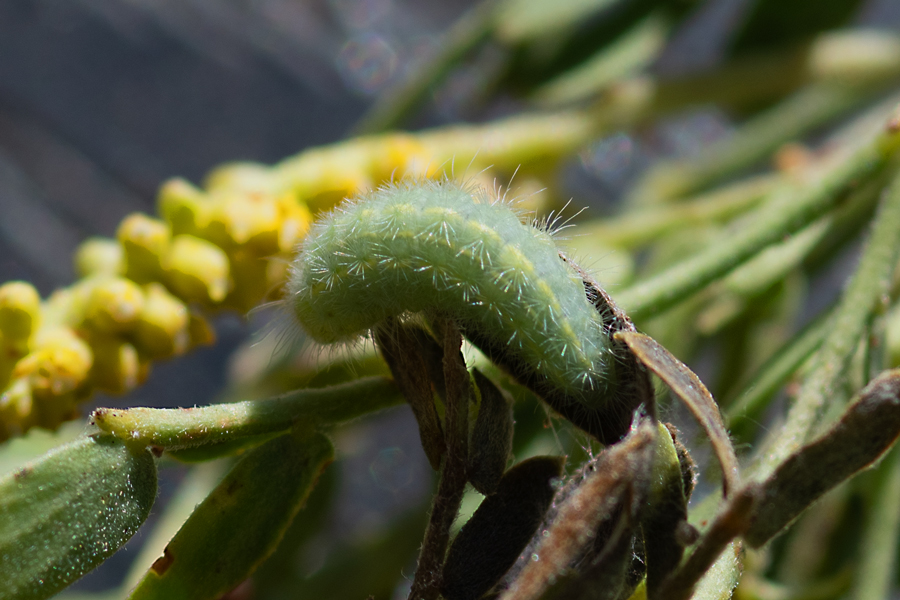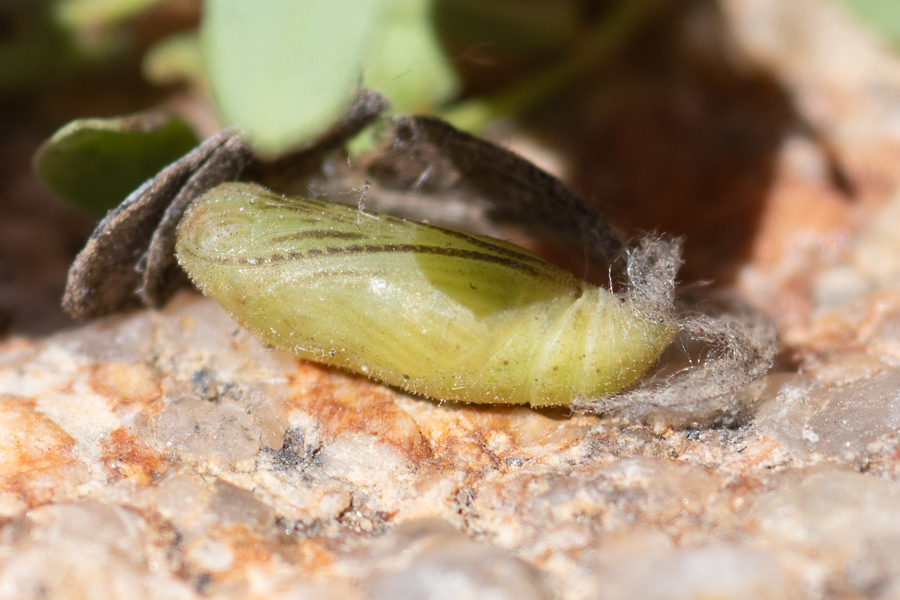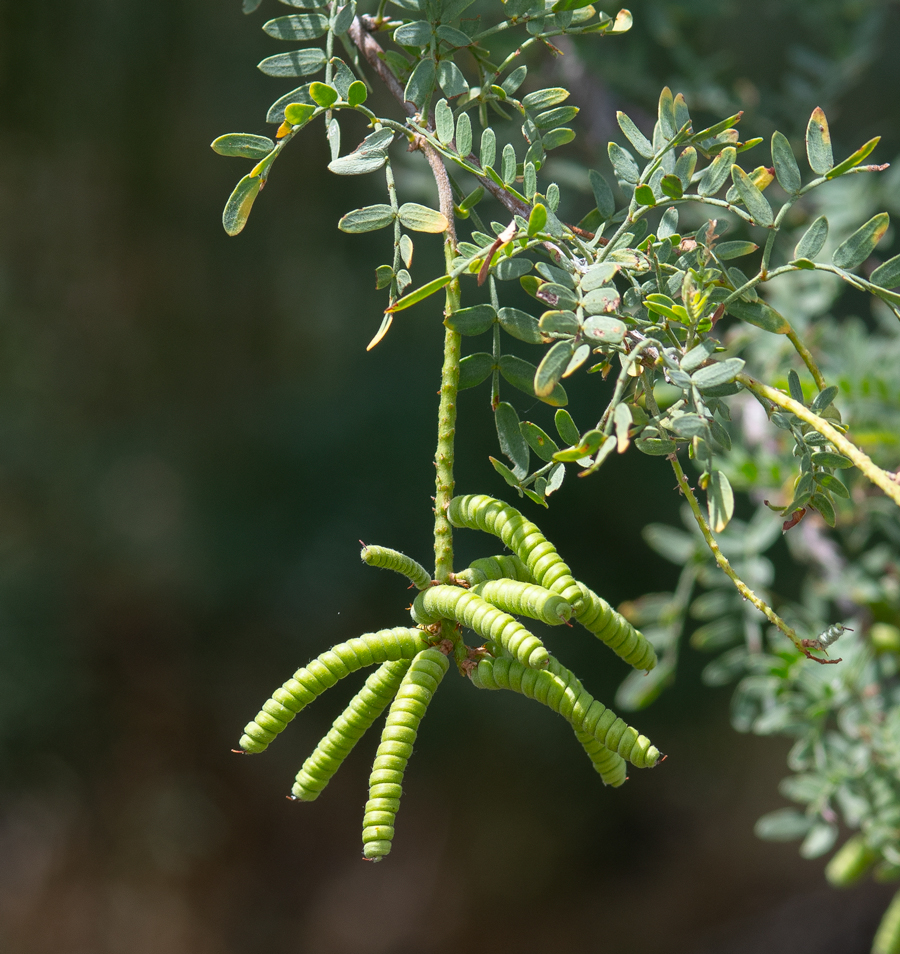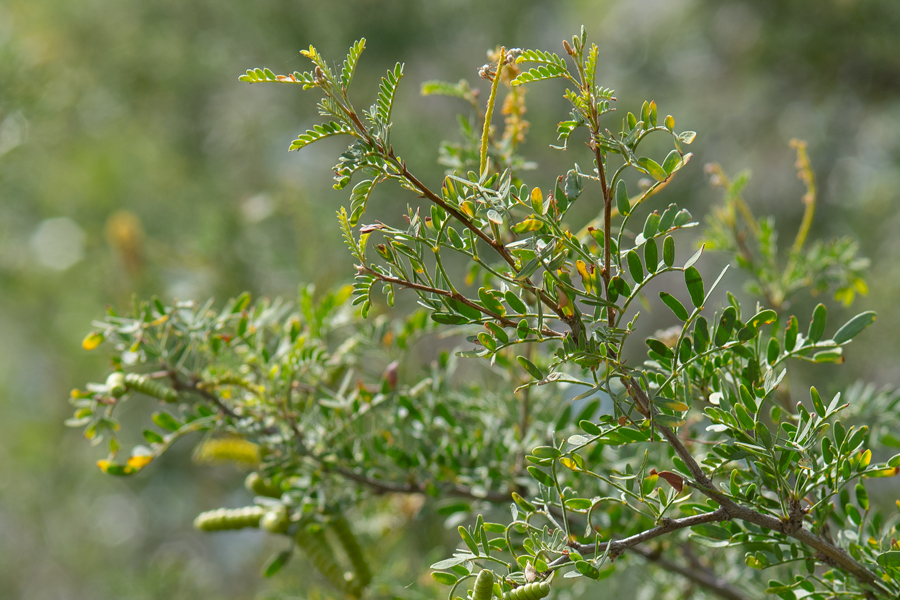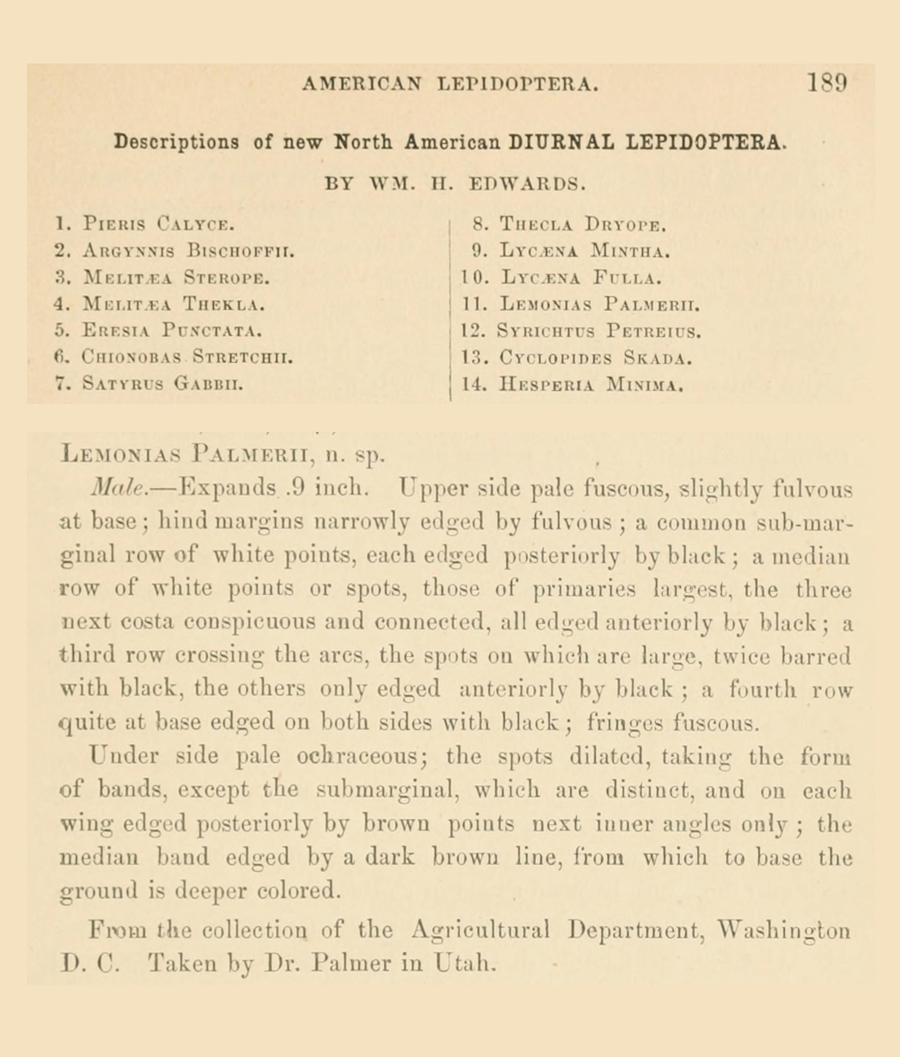Apodemia palmerii palmerii
Palmer's Metalmark
Palmer's metalmarks are closely associated with mesquite trees, their larval food plant. So they will only be found where honey mesquite - Neltuma (formerly Prosopis) glandulosa - and screwbean mesquite - Strombocarpa pubescens - grow in the deserts. Females lay eggs on the leaves of these plants, and caterpillars form shelters in the leaves, exiting them to feed. They are multiple brooded, but late in the year, mid-instar larvae stay in the shelters and hibernate. These shelters may be conspicuous in the winter as the other leaves shed. When the leaves regrow in the winter/spring, larvae can finish feeding. This leads to a flight that begins around March. The wings of these spring flyers are darker than those of the later brood(s).
Palmer's metalmark from Scissors Crossing in Anza-Borrego Desert State Park. September 28, 2013.
Another Apodemia palmerii palmerii, same day and place as above.
For comparison, here is subspecies arizona. Boyce Thompson Arboretum east of Phoenix, September 25, 2007.
Also subspecies arizona, showing the ventral side of the wings. Boyce Thompson Arboretum east of Phoenix, September 25, 2007.
The larva of Apodemia palmerii palmerii feeding on mesquite; this is the last instar. This was provided to me by Gordon Pratt for our Joshua Tree book. July 27, 2020.
The chrysalis, after the caterpillar above pupated. August 6, 2020.
The aptly-named "screwbean" of the larval food plant, screwbean mesquite, Strombocarpa pubescens, which is a Fabaceae-family tree or shrub.
The leaves of STrombocarpa pubescens.
The original description of Apodemia palmerii by William Henry Edwards, as Lemonias palmerii. This was in 1870 in the journal Transactions of the American Entomological Society, vol. 3, no. 2.
©Dennis Walker
